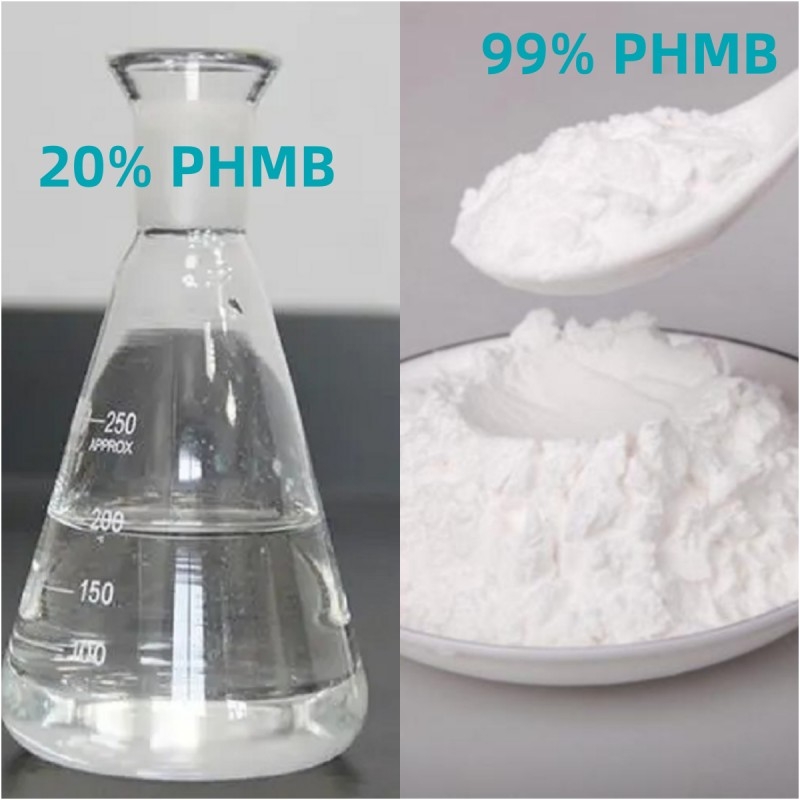-
Categories
-
Pharmaceutical Intermediates
-
Active Pharmaceutical Ingredients
-
Food Additives
- Industrial Coatings
- Agrochemicals
- Dyes and Pigments
- Surfactant
- Flavors and Fragrances
- Chemical Reagents
- Catalyst and Auxiliary
- Natural Products
- Inorganic Chemistry
-
Organic Chemistry
-
Biochemical Engineering
- Analytical Chemistry
-
Cosmetic Ingredient
- Water Treatment Chemical
-
Pharmaceutical Intermediates
Promotion
ECHEMI Mall
Wholesale
Weekly Price
Exhibition
News
-
Trade Service
Overview
1.
Research purpose
The study of raw material-excipient interaction is an important stage before formulation development
.
The potential physical, chemical and biological interactions between raw materials and excipients will affect the absorption and safety of the preparation in the body
Speeding up the drug development process and optimizing the stability of dosage forms are the two major goals of drug development
.
A key step to achieve these goals is to determine the best prescription composition during pre-prescription research
2.
Importance of compatibility experiment of raw materials
(1) It can maximize the stability of the dosage form
.
The physical or chemical interaction between the drug and excipients will affect the bioavailability and stability of the drug;
(2) It can help us understand the possible reactions before determining the final dosage form;
(3) The compatibility of raw and auxiliary materials is essential for IND declaration
.
At present, the US Food and Drug Administration has mandated the submission of compatibility data of raw materials and excipients before approving any new drugs;
(4) The final list of excipients that can be used in the prescription can be determined
.
Raw material-excipient interaction pathway
1.
Physical interaction
Physical interactions are very common in dosage forms and difficult to detect
.
The physical interaction may or may not involve chemical changes
2.
Chemical interaction
The mutual reactions between raw materials and auxiliary materials, auxiliary materials and auxiliary materials, auxiliary materials and auxiliary materials, and raw materials and auxiliary materials impurity form unstable compounds, that is, chemical interactions
.
Usually chemical interactions are harmful to the formulation, so such interactions must usually be avoided
(1) Hydrolysis reaction
Drugs containing functional groups such as esters, amides, and lactones are prone to hydrolysis reactions
.
This is probably the most common way of drug degradation, because most drugs have such groups
(2) Oxidation reaction
Oxidative degradation is a decomposition method second only to hydrolysis
.
Oxygen, heavy metal ions and light can all catalyze the oxidation reaction, leading to the formation of free radicals
(3) Isomerization
Isomerization refers to the conversion of a chemical substance into its optical or geometric isomers
.
The isomers may have different pharmacological or toxicological properties
(4) Photolysis reaction
Reactions such as redox, cyclization, and polymerization can be catalyzed or accelerated under light
.
(5) Polymerization
Intermolecular reactions can lead to dimers and higher molecular weight chemicals
.
For example, the solution of ampicillin gradually forms dimers, trimers, and finally polymer degradation products
.
(6) Maillard reaction
Lactose is one of the commonly used excipients in solid oral tablets, and its physical and chemical properties are relatively stable
.
But lactose is a reducing disaccharide, which can react with drugs or excipients containing amino groups
.
Therefore, when using lactose excipients, you should first pay attention to whether the other excipients or drugs used contain amino groups
.
3.
Biological interaction
Biological interaction is the interaction between the active ingredients of the drug and excipients in vivo after administration
.
The interaction between the drug and body fluids affects the rate of absorption
.
When excipients and active pharmaceutical ingredients are administered together, all excipients interact in a physiological manner, such as premature rupture of the enteric coating, and some excipients leading to increased gastrointestinal motility, etc.
, are all biological interactions
.
Biological interactions mainly affect the safety and effectiveness of drugs in the body
.
Guidelines for Compatibility of Raw and Excipients
At present, there are no clear guidelines for raw and auxiliary materials in various countries.
Below, the author introduces several documents that can be used as references.
The specific experimental design needs to be designed according to the specific conditions of the project
.
1.
"Guiding Principles for Research on Compatibility of Pharmaceutical Excipients and Drugs" (Draft for Solicitation of Comments)
The following is the experimental method and decision tree of the guiding principle:
The usual experimental research methods for the chemical compatibility of pharmaceutical excipients and pharmaceuticals are as follows:
The various pharmaceutical excipients to be used in the formulation research are physically mixed with the pharmaceutical active substance one by one, and the accelerated test is carried out under the conditions of high temperature, high humidity and strong light.
The choice of test conditions should reflect the key quality attribute indicators of the preparation.
The ratio of the ingredients of the drug and the excipients should be able to reflect the changes in the formulation of the formulation.
For example, after pre-mixing and screening according to the proportions of different functional excipients in the prescription, the ratio of the main drug to the excipients should be set to 1:5 (diluent), 3:1 (viscosity).
Mixture, disintegrant), 5:1 (lubricant), and 10:1 (colorant)
.
Take a certain amount, loft it under high temperature, high humidity, and light, and study whether it produces new impurities under the above conditions
.
2.
"Guiding Principles of Basic Techniques for the Research of Chemical Pharmaceutical Preparations"
For lack of relevant research data, a compatibility study can be considered
.
For example, for oral solid preparations, several kinds of excipients can be selected.
If the amount of excipients is large (such as diluents, etc.
), they can be mixed at the ratio of main drug: excipients = 1:5.
If the amount of excipients is small (such as lubricants, etc.
), It can be mixed according to the ratio of main medicine: excipients = 20:1, take a certain amount, refer to the experimental methods of the influencing factors in the drug stability guidelines or other suitable experimental methods, and focus on the properties, content, related substances, etc.
, when necessary , The raw materials and excipients can be used to do parallel control experiments respectively to determine whether it is the change of the raw material itself or the influence of the excipients
.
If an excipient that interacts with the drug is used in the prescription, it is necessary to use experimental data to prove the rationality of the prescription
.
For some physiologically active excipients, excipients that exceed conventional dosages and are not supported by literature, and excipients that change the route of administration, necessary safety tests are required
.
3.
ICH guideline Q8(R2)
The ICH guidelines state that the compatibility test of raw materials and excipients should be carried out at the beginning of formulation development
.
4.
Chemistry Review of Question-based Review (QbR) Submissions
The FDA released "Chemistry Review of Question-based Review (QbR) Submissions" ATTACHMENT 2: QbR QUESTIONS-DRUG PRODUCT (CHEMISTRY) Part 9 mentioned: "What evidence supports excipient-drug substance compatibility and if applicable,excipient-excipient compatibility ?"
.
This guiding principle requires us to prove that the excipients we choose are applicable through the compatibility experiment of raw materials and excipients
.
Based on several guiding principles, the compatibility test of raw materials and excipients for most projects can be said to be necessary in our pre-prescription research.
Let us discuss how to do a compatibility test of raw materials and excipients together
.
Compatibility test of raw materials
It can be seen from the above guiding principles that China’s guiding principles are relatively detailed, which introduces the ratio of main drugs and excipients, and key inspection content, while foreign guiding principles only roughly indicate the need for compatibility of raw and auxiliary materials Experiment
.
Since there is no authoritative guideline at present, we need to carry out our experimental design based on the actual situation of our project and some existing guidelines when designing the experiment.
The experiment needs to be flexibly changed according to different projects.
.
Before the raw and excipient compatibility test, we need to make statistics on the excipients that may be used in our project.
This requires us to make a decision based on our pre-prescription literature research and our own experience
.
After determining the auxiliary materials, we generally formulate the raw materials and auxiliary materials into a binary mixture (the ratio can refer to the guiding principles).
In principle, it is not recommended to configure a multi-component mixture, and separate raw materials and separate auxiliary materials are used as a control, and should be combined with the mixture at the same time Stake out
.
For the inspection conditions of the compatibility test of raw materials and auxiliary materials, we will generally investigate three directions, namely, high temperature, light and high humidity conditions
.
The high temperature test investigation conditions are generally higher than the accelerated conditions, and you can choose 50℃ or 60℃
.
High humidity test generally choose 75%RH or 92.
5%RH
.
The guiding principles of the illumination test stipulate that the total illuminance is not less than 1.
2×106 Lux•hr, and the near ultraviolet energy is not less than 200w•hr/m2
.
For the test sampling time point, you can choose 0, 7, 14 days or 0, 10, 30 days
.
After sampling, we need to observe and evaluate the changes in the sample
.
First, we need to measure the weight gain and weight loss of our samples, whether our samples have color changes under light and high temperature, etc.
, and finally send related substances for inspection
.
to sum up
The interaction of raw materials and excipients is an important issue in formulation development
.
It is important to choose suitable excipients in pre-prescription research
.
Many stability problems encountered after drug development and commercialization are caused by the incomplete research on the interaction of raw materials-excipients and the lack of understanding of the complexity of chemical and physical interactions.
The study of effects is a necessary prerequisite for the development of stable and high-quality preparations
.
Reference materials:
[1]Interactions and Incompatibilities of Pharmaceutical Excipients with Active Pharmaceutical Ingredients: A Comprehensive Review.
2010.
[2] Serajuddin A, Thakur AB, Ghoshal RN, et al.
Selection of solid dosage form composition through drug–excipient compatibility testing[J].
Journal of Pharmaceutical Sciences, 1999, 88(7):696-704.
[3] Drug-Excipient compatibility studies: First step for dosage form development
[4] "Guiding Principles of Basic Techniques for the Research of Chemical Pharmaceutical Preparations"
[5] "ICH Guiding Principles Q8(R2)"
[6] "Chemistry Review of Question-based Review (QbR) Submissions"







